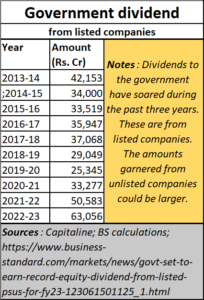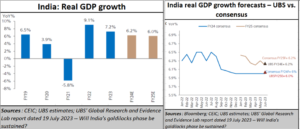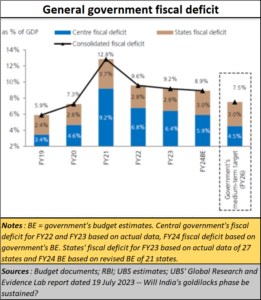India stunts its middle-class growth
RN Bhaskar
Not a month passes by in India without eulogies being paid to this country’s growing middle class. This is important for several reasons. The middle class has purchasing power. The greater the number of people with purchasing power, the more goods and services they will consume, That, in turn, means more business for industry. Which causes the country’s GDP to swell.
But there is another reason. It is the middle class which ensures political and social stability to any nation. This group becomes the keeper and preserver of social norms, even values. When the middle class gets dislodged, a variety of social, economic and law and order problems begin to raise their heads. Which is why, globally, governments take pains to preserve and nurture this segment of the population.
Hence when media headlines declared this July that India had a bright future because of a burgeoning middle class (“Middle class set to boom in India, avg household income to be Rs 20L/year by 2047” screamed Print), it filled Indians with pride.
But it is worth taking a closer look at what the numbers mean.
One way is to look at how India allowed its middle class to shrivel during the pandemic (https://asiaconverge.com/2022/08/taxing-the-poor-and-making-them-poorer/).
Surveys conducted by Pew Research showed that while China saw its middle class shrink by 10 million, India saw its numbers fall by 32 million during the pandemic years. In the case of low-income groups, China registered an increase of 30 million, India painfully saw this segment reduce by another 35 million. As a result, the number of poor people in India increased by 75 million, while this number China saw this number crawl by just 1 million.
Maybe, those were Covid times. And India likes to claim that much has been done to ramp up the middle class. Thus, the announcements in July 2023, could have been an affirmation of this resolve.
But look at the numbers closely (reproduced quite well by Business Standard — https://www.business-standard.com/economy/news/indian-middle-class-will-nearly-double-to-61-by-2046-47-price-report-123070500864_1.html). They show that — yes — the middle class will grow – but at a measly 3% CAGR, just a notch above the population growth of under 2%. On the contrary, the affluent will grow faster by 8.2%. That in turn tells you how the government’s policies will continue to favour the wealthy not the middle class, and certainly, not the poor.
This leads to a piquant situation. The government’s schemes like free food, medicare (Ayushman Bharat) and subsidised housing, is meant for the poor. The rich get by in any case, irrespective of adversities. Thus, the middle class will get squeezed and will shrivel. That could be dangerous for the economy.
Fears of Shrinkage
If you examine things closely, you tend to agree there is a real danger of the middle-class shrinking.
First look at the way India has been making conditions quite unattractive for the wealthy for doing business here. Surveys conducted by Henely Global (https://www.henleyglobal.com/publications/henley-private-wealth-migration-report-2023/inflows-outflows) show that anywhere between 6,500 and 7,500 Indian millionaires opted to emigrate each year. True, China saw a bigger exodus – 10,800-13,500 a year. But that is hardly a reason for India to gloat. China produces more millionaires each year – 0.3 per million people. India produces just 0.1 (https://asiaconverge.com/2023/06/india-stores-gold-overseas/).
Effectively, India drives away the very people who can create enterprises and generate wealth, and jobs. Already India has one of the highest rates of unemployment in this region (https://asiaconverge.com/2023/03/india-tries-to-regain-its-balance/). Without jobs and wealth generation, how will the numbers in the middle-class segment grow? Just consider the – by now famous – tweet sent out by Amit Mitra, former secretary general of FICCI, and currently Special Advisor to Chief Minister of West Bengal on Finance in which he says that “Under Modi Govt 35,000 Indian Entrepreneurs of High Net Worth LEFT India between 2014-2020, as NRI/Immigrants” (https://twitter.com/DrAmitMitra/status/1451056778846740483).
If this is not bad enough, look at the figures given out by the government itself before the Lok Sabha in July 2022 and in July 2023 (https://asiaconverge.com/2023/09/inflated-views-and-deflated-economy/). They show that 225,620 Indians opted to surrender their passports last year, the highest ever emigration from India. The figures for 2023 – till June (that could mean just three months of the financial year) were as high as 87,026. When these people also choose to emigrate, the numbers for the middle class, and even the rich, may not turn out to be as rosy as are being predicted.
Another reason why India’s middle class may shrink instead of expanding – even at a measly rate of 3% — is because the country’s GDP growth rates have been declining. And while many think that India’s GDP will continue to grow at 6%, savvy bankers like UBS, which do their own independent research, believe that downward pressures will soon become evident.
True, the IMF increased this growth rate to 6.3% just a few days ago. But as Subramanian Swamy, member of the Indian Parliament, points out (https://x.com/Swamy39/status/1712302556054249768?s=20), “IMF has no independent data collection but relies on India’s CSO data, which relies on PMO to concoct!!”
When the GDP growth rates themselves begin to show a deceleration, one cannot expect an acceleration in the growth rates for either the middle-class or even the affluent class.
Some of the euphoria will have to be muted.
Another worrying factor is that the government’s fiscal deficits are not as healthy as claimed.
True, there appears to be a declining trend when it comes to the figures given out.. The deficit levels of 9.6% in FY 2022 are expected to be 9.2% in FY 2023. During FY 2024, they are expected to decline further to 8.9%. That does look encouraging.
Yet look beyond the deficit numbers, and you realise the actual deficits have been concealed through clever management of fund flows. The funds are needed to finance the government’s urge to splurge which remains undiminished – and has been showing signs of soaring even higher.
There are splurges on the Production Linked Incentives (PLI). These, as pointed out by both Raghuram Rajan, former governor of the RBI and by Arvind Subramanian, former chief economic advisor to the government of India, are nothing short of backdoor promotion of the cursed licence raj (https://asiaconverge.com/2022/10/pli-and-the-indian-economy/). They will render India more inefficient in the use of capital, and the creation of wealth.
A more compelling argument against targeted subsidies for industry can be found in the remarks made by Vinod Khosla at the All-In Summit on 26 September 2023 (https://www.youtube.com/watch?v=EIjxJM_KPsM). At around 21 minutes into the discussion, Khosla points out how some of the world’s biggest innovations did not come from large entities like IBM, or Microsoft. They came from startups, and owner driven ventures. He emphasises how, during the 40 odd years of his career as a venture capitalist, “I have not seen — and people get surprised at this one — example of a large Innovation that came from a large company or institution.”
A venture capitalist is trained to evaluate such risks. Governments and large corporations are not. Moreover, a market-directed allocation of capital is invariably better than a government-directed one.
 Concealing deficit through dividends
Concealing deficit through dividends
There is a third problem. The government has kept its deficit down by taking bigger dividends from an already overburdened public sector. Watch the way this number has swelled during the past two years.
This is the money that goes towards financing the free food, the housing schemes, and the large number of welfare schemes that the government has announced in the past one year.
To meet these ever-growing demand for funds, the government has not hesitated from demanding money even from its Central bank, the RBI.
 It may be recalled that this demand from the RBI compelled Viral Acharya, former deputy governor of the central bank to turn in hi resignation (https://economictimes.indiatimes.com/news/economy/policy/rbi-resisted-govt-push-for-rs-3-lakh-cr-transfer-in-2018-ahead-of-elections-viral-acharya/articleshow/103464033.cms?from=mdr). This was revealed by Acharya in the prelude to his book. The money was to have been used to meet the populist spending in the run-up to the 2019 general elections.
It may be recalled that this demand from the RBI compelled Viral Acharya, former deputy governor of the central bank to turn in hi resignation (https://economictimes.indiatimes.com/news/economy/policy/rbi-resisted-govt-push-for-rs-3-lakh-cr-transfer-in-2018-ahead-of-elections-viral-acharya/articleshow/103464033.cms?from=mdr). This was revealed by Acharya in the prelude to his book. The money was to have been used to meet the populist spending in the run-up to the 2019 general elections.
When money is collected through new taxes like GST, through public sector and RBI dividends, the government ends up preventing these sectors from redeploying their reserves into fresh productive capacities.
That could also explain the government’s penchant for becoming the biggest investor in power projects as well (free subscription https://bhaskarr.substack.com/p/india-has-been-terribly-shortsighted?sd=pf). Conventionally, large capital-intensive projects allow governments to take a small percentage of the outlay towards funding its own political coffers. The fact that the government has continued to promote grid power instead of rooftop power shows how the penchant for giving away freebies remains stronger than before, and has been growing.
And as mentioned earlier, the ;oor get these doles and subsidies. The rich don’t need them. The consequence, the middle-class is compelled to shrivel.
Blow upon blow
Had India’s GDP registered a vibrant rate of growth, such largesse could be overlooked. Had private investments continued to bolster India’s employment generation and wealth generation, such doles and subsidies could be forgiven. But when productive capacities are under a strain, when people and capital are fleeing the country because they perceive a not-so-favourable climate here, such doles and subsidies will only make India weaker. That is why India’s GDP growth could weaken further. So will its growth of the middle and affluent classes.
India has already harmed its agricultural sector. Even sectors like milk, which grew without any government funding, are now getting doles and subsidies (https://asiaconverge.com/2021/11/remembering-kurien-and-how-much-the-country-owes-to-him/). The ban on futures trading on commodity markets for the largest number of agricultural commodities in the country will weaken the agricultural sector further (). The ban on export of rice, wheat and now sugar, will ruin India’s reputation as an exporter. And the decision to first ban the import of computers and then permit them on a case-by-case basis only reminds people that the licence raj is going to be back with all the terrible consequences it had on economic growth.
India still has some oomph left. One only hopes that the government will take corrective measures and restore confidence in the country’s businessmen and markets. Else expect more trouble ahead.








































COMMENTS